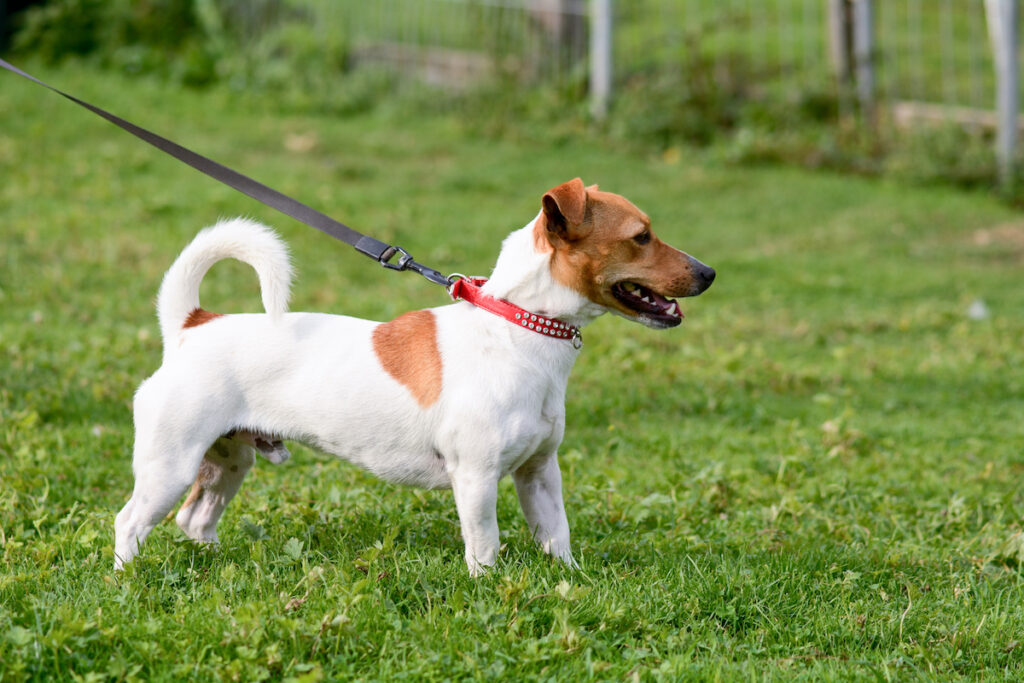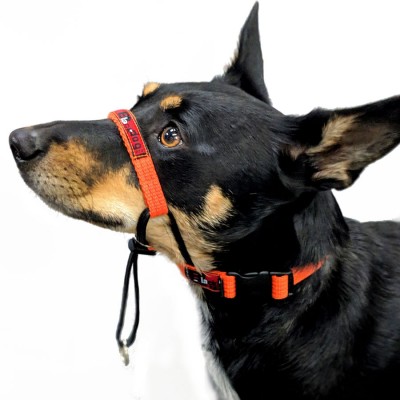It’s always an interesting debate when you chat with dog owners about what equipment they prefer to walk their dog in. It seems as though everyone has a different opinion!
So let’s break down the pros and cons of 3 different pieces of walking equipment.
Collars

Collars are one of those essential pieces of equipment for every dog as it can hold ID and you can hold your dog in an emergency or if they are off their lead. However, walking your dog on a collar when they don’t know how to walk nicely on a lead brings about some definite cons.
In a study by Hallgren (1992) a staggering 91% of dogs with neck injuries had also been exposed to jerking on the leash by the owner or been allowed to pull hard on the leash for long periods of time. Neck injuries include bruising, whiplash, crushed trachea, damage to the larynx and fractured vertebrae.
A study by Pauli et al (2006) found that neck pressure caused by a collar caused significant increase in eye pressure which can cause serious injury to dogs already suffering from thin corneas, glaucoma or eye injuries.
Collars can also press into the oesophagus and trachea. If pressure is applied it can cause trauma which leads to inflammation which can also lead to a depleted immune system and a deficit of thyroid hormone. Applying pressure can sound like your dog is gagging when pulling on the lead.
Leash pulling when wearing a collar can also cause injury which can impinge on the nerves supplying the forelimbs, possibly leading to abnormal sensation in the feet.
That doesn’t lean in favour of collars at all.
Halters or Head Collars

Head collars can be actually dangerous to your dog’s neck if not used correctly, just like a collar. If a dog pulls suddenly to the end of the lead while wearing a head collar the neck can be jerked back and cause whiplash or worse, fractured vertebrae.
While head collars can make it easier to control a dog that is pulling, we only recommend using a head collar with two important considerations;
- The head collar is introduced to the dog gradually using a desensitisation and counter conditioning process (this happens gradually in small sessions – like wearing in a new pair of boots).
- They should only be used in conjunction with a correctly fitted harness and double ended lead. We find this gives the handler the best control, while being as safe as possible it puts most of the leash pressure on the harness.
Harnesses

Harnesses are a great alternative, but can also cause issues if not the correct design or fit on your dog. Harnesses that are often called ‘no pull’ usually have a strap across the chest impeding shoulder movement. This can lead to long term muscle and ligament damage. A correctly fitting harness will avoid that damage.
There is no harness that is perfect for every dog. Consider your dog’s body shape and we advise you to try several out to see which best fits your dog.
Correctly fitted harness – tick!
Final thoughts
In summary, the studies clearly show that dogs who pull on collars are at risk of injury and that a correctly fitted harness is an excellent alternative. Knowing the pros and cons, what would you choose?
Ultimately, a dog’s walking equipment is for safety, for them and for you. Teaching your dog to walk on a loose lead, focusing on you and not having to rely on equipment to control them will have the best outcome for your dog’s long term health. If you are struggling with loose lead walking, seek help from a qualified trainer force free trainer.
To find something suitable for your dog shop the wide range of Collars, Halters and Harnesses at vet-n-pet DIRECT.
References
Hallgren, A (1992), Back Study, Animal Behaviour Consultants Newsletter, July,1992 V.9 No 2, https://banshockcollars.ca/pdf/back_problems.pdf
Pauli, A et al. (2006) Effects of the Application of Neck Pressure by a Collar or Harness on Intraocular Pressure in Dogs, J Am Anim Hosp Assoc 42 (3): 207–211, https://pubmed.ncbi.nlm.nih.gov/16611932/
